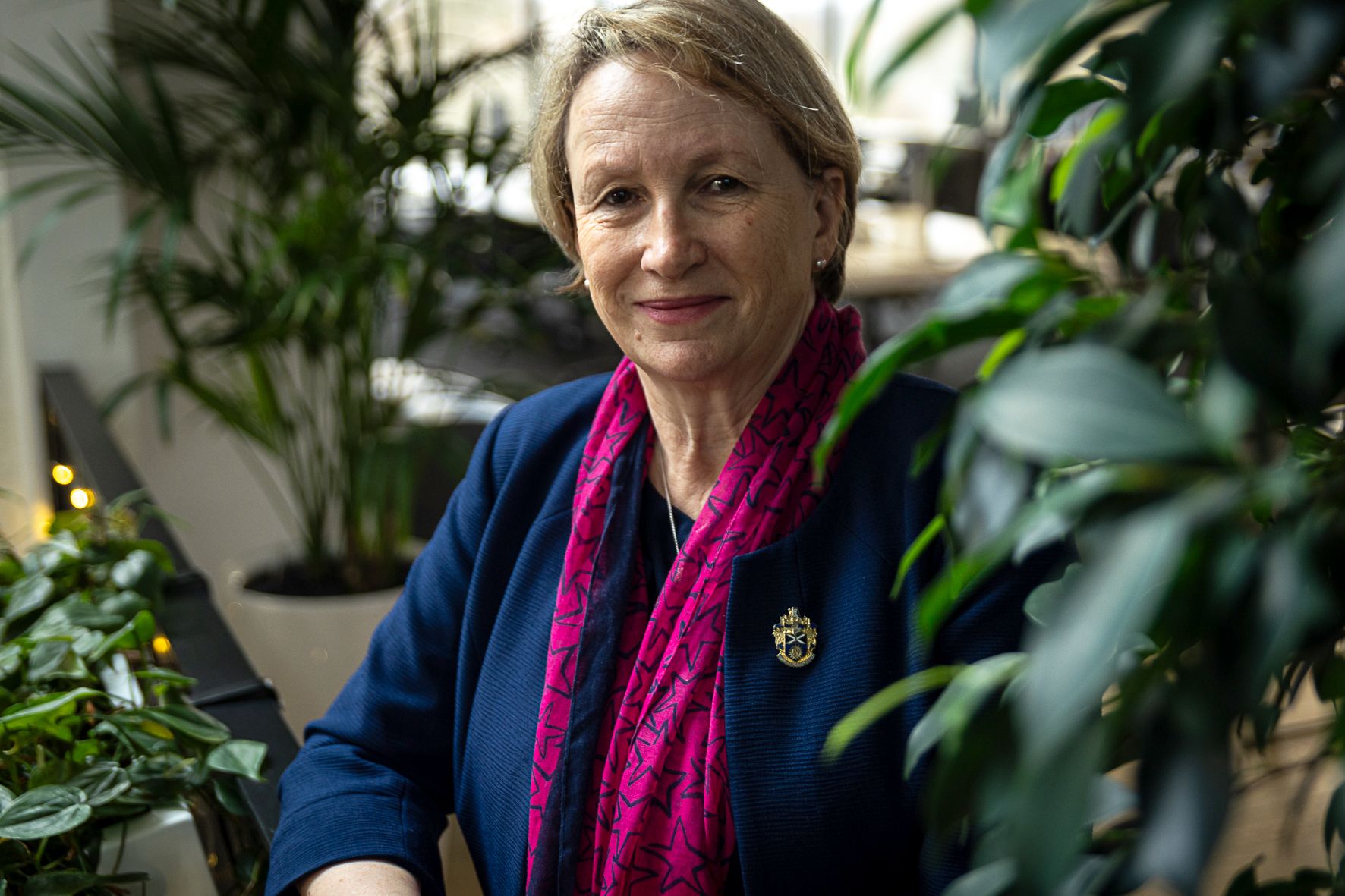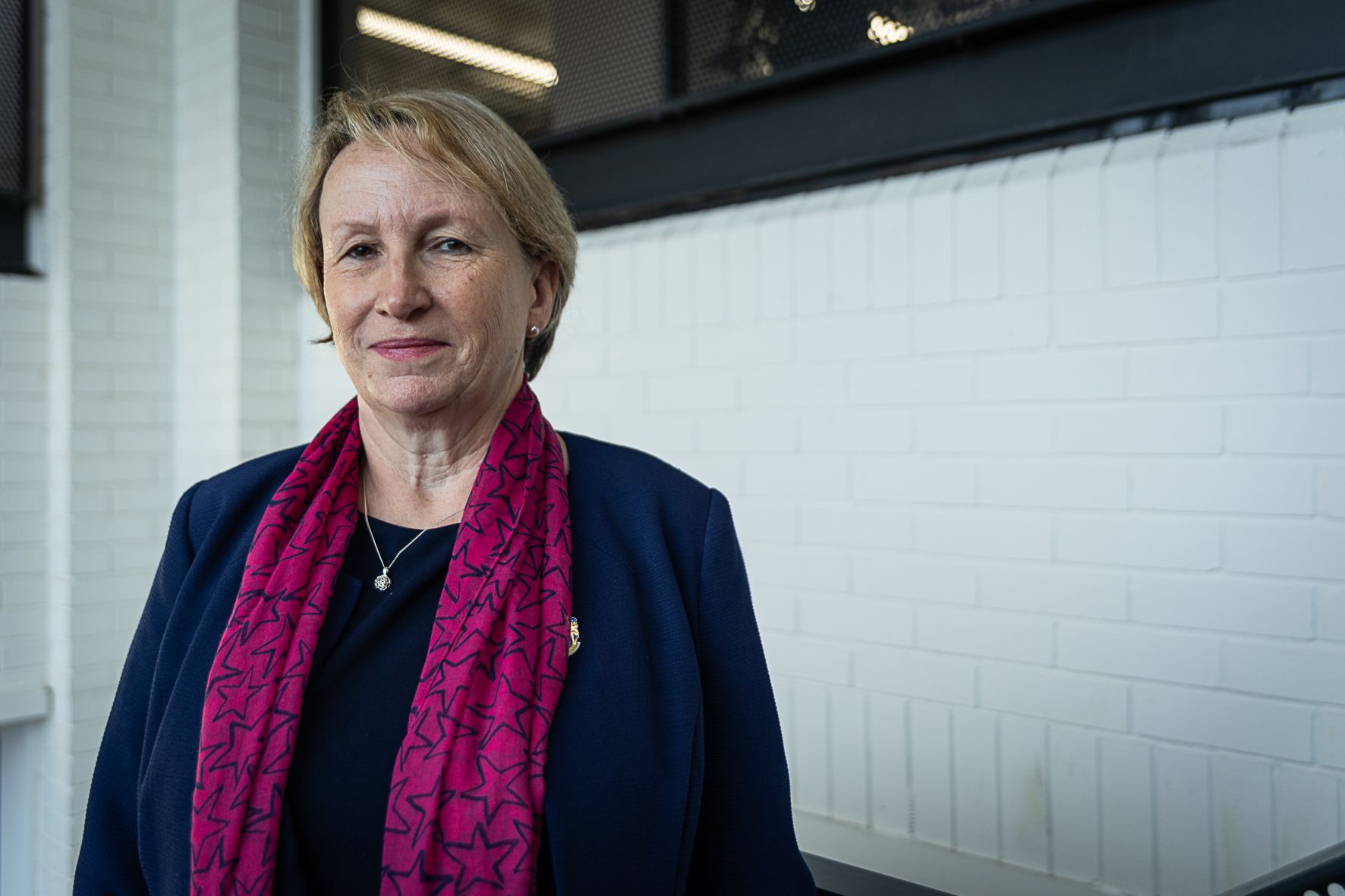Profile: Charlotte Beardmore
Can we do more?


Profile: Charlotte Beardmore
Can we do more?
Synergy sits down with SoR’s executive director of professional policy, Charlotte Beardmore, to hear about her role and the Society’s ongoing work in professional support
Charlotte Beardmore is uniquely positioned to understand the two sides of radiography.
Having started her training as a diagnostic radiographer in 1981, immediately after qualifying Charlotte went into training in therapeutic radiography.
This dual perspective gives Charlotte a bird’s-eye view of the profession she loves, in her role as executive director of professional policy for the Society of Radiographers.
Having worked with the SoR since the early 2000s, Charlotte has had a significant impact on the working practices of radiographers in the UK.
But with the world of imaging and radiotherapy rapidly evolving, and technology moving faster than ever, there is no time to rest for Charlotte and her team of experienced, registered radiographers.
Synergy recently sat down with Charlotte to discuss the big issues facing the discipline, and to hear more about SoR’s priorities for professional policy in 2024.
Charlotte’s role
“My role covers everything in professional policy,” Charlotte told Synergy, “which is guidance documents, professional standards, research, and education.
“So I oversee a team of expert radiographers who are all registered radiographers as well, who manage specific areas of practice within that portfolio, and we’re well supported by an administrative team as well.”
Charlotte’s role forms a major part of what the Society of Radiographers offers its members, as that professional support helps keep radiographers informed and educated, while the other side, the trade union side of the Society, helps members with employment issues.
“It’s an honour to be able to do that job, and to lead a team of radiographers who are experts in that area,” Charlotte said.
“On a day-to-day basis, I’m supporting the work of the team, working with the council and the College of Radiographers, and delivering the strategy and the operational plan.
“It’s about listening to the profession and understanding what their needs are, and how to best support that professionally.”
That professional support includes the College of Radiographers Education and Career Framework, launched in 2022.
The framework is targeted at professionals across radiography, from those working clinically, to educators, researchers, and leaders, to provide guidance on education and career development.
“Being able to establish that and review that framework for the profession has been hugely important,” Charlotte said.
“I’m very grateful for all of the Society members, and members of my team, who led that work - it really articulates the whole profile of the profession at every level, and in every setting.”
Both sides of the coin
Key to Charlotte’s role is her understanding of both therapeutic and diagnostic radiography, having trained in both disciplines early in her career.
Starting her training as a diagnostic radiographer in 1981 at Guy’s Hospital in London, Charlotte went straight on to train in therapeutic radiography, and continued to work at Guy’s until 1987.
After moving to the Royal Marsden Hospital, also in London, first as a junior radiographer and working her way up to superintendent radiographer, Charlotte then moved to the Royal Berkshire Hospital in Reading in 1998, as radiotherapy services manager.
Charlotte used her therapeutic radiography training at the Royal Marsden Hospital, working in the planning of patients’ treatment.
She said: “The appeal for me of working in radiotherapy was being able to manage and care for patients throughout the course of treatment, from the start to the finish of their treatment, but also that team interaction, and wanting to do the very best and to contribute to research to really help develop pathways and improvements for patients.”
While a huge part of the work of the Society of Radiographers is to promote the wider radiography profession, it is also a major priority to promote the therapeutic side of the discipline, to encourage more people to consider careers as therapeutic radiographers.
Charlotte said: “The numbers within the profession working in radiotherapy are much smaller than diagnostic. It feels like a hidden area of the service, but actually one in two members of the public will be diagnosed with cancer, and of those people 40 to 50 per cent will receive radiotherapy. So many people and their families will be touched by someone having radiotherapy for their cancer treatment.
“So I think raising awareness of the profession nationally is hugely important, and we’ve been doing a lot of work with the government, and we have our own careers officer Michelle Tyler, who’s been doing a lot of outreach work to help promote the profession.”
The Society is working with educators and careers advisors to ensure they’re aware of both therapeutic and diagnostic carers, and is also lobbying the government to ensure that there’s a clear separation between the two professions.
For radiographers, they can also help with promoting the profession to everyone they meet - by proudly introducing themselves as radiographers.
Doing more for the profession
Charlotte then became involved with the Society of Radiographers in the 1990s, after sitting next to SoR’s then president, Julia Shrimpton, during a conference dinner.
After Charlotte suggested that more needed to be done to support therapeutic radiographers, and asking ‘can we do more?’, the president suggested Charlotte join the SoR’s UK council, which she did, then serving a year as president in 2000.
“My interest in being able to influence policy and direction of travel at a strategic level grew,” Charlotte said, “and then a role came up at the Society of Radiographers as a radiotherapy officer.”
Starting out working for SoR one day a week, Charlotte’s role grew, and she became what is now head of professional practice and education in 2012, and then in 2014 stepped up to her current role as executive director of professional policy.
As part of her role, Charlotte also works closely with the College of Radiographers, the registered charity that receives funding from the Society to deliver its programme of work.
This programme includes professional standards, approval of pre and post-registration radiography programmes, and support for research.
“It’s really, really important work,” Charlotte said.
“Members of my team work across both organisations, and we also have a dedicated education team that work directly for the College.
“So their focus really is to assure the quality of radiography programmes against that education career framework, to ensure that we're meeting the current standards of practice and really above the threshold level of the regulator.
The Society and the College, while very closely linked, are separate entities. Charlotte added that the Society works much more closely with members, while the College covers a very important but focused area of work for the two organisations.
Hopes and concerns
Looking ahead to 2024, what are the biggest challenges facing the radiography profession, in Charlotte’s view?
“I think the biggest challenges at the moment are the workforce challenges,” she said.
“The numbers in the workforce, but also articulating to government that it’s not just about the numbers, it’s about the skills development of that profession, how we grow the profession safely and support the increase in the workforce needed.”
The report from Professor Sir Mike Richards, ‘Diagnostics: Recovery and Renewal – Report of the Independent Review of Diagnostic Services for NHS England,’ published in 2020, found that the NHS would need 4,000 more radiographers, 2,500 more assistant practitioners, and double the number of CT scanners in England to keep up with demand - a huge number, especially as a majority of university radiography courses have not been filled in recent years.
“How do we balance and grow the workforce safely, to deliver timely care for patients that we would all want for us and for members of our family?” Charlotte said.
“For me, that’s quite a challenge.
Another cause for concern is around how to support international recruits, as recent government policies may make it more difficult for health workers from abroad to move to the UK.
Charlotte said: “We’re working really closely both on the trade union side and on the professional side, in learning how we can better support the international recruits that come into this country and work.”
But there is also plenty to be positive about in the profession - widening access to the profession, thanks to the growth of apprenticeships, being a particular highlight.
“We’re now seeing the growth in apprenticeships, and it’s been really pleasing to see radiography educators and universities responding and putting on training for apprentices.
“Financially it’s really challenging to go to university now, so if you can earn and learn through an apprenticeship that’s going to be win-win.”
Developing technology in simulation is also a very exciting development with radiography, as virtual reality and augmented reality tech is helping trainees to immerse themselves in real-world scenarios, before they’re in the workplace.
Charlotte said that the profession needs to continue utilising these tools, and that government needs to invest more in simulation to help support the next generation of radiographers.
She added: “If we could turn on a tap and we could have all the workforce here, that would be fantastic, but it’s going to take time and we need the workforce to be trained safely and effectively.”
On further opportunities for the profession, Charlotte added: “The radiography workforce is highly skilled, and radiographers have always adapted to the changing technology which is continually emerging, there are really fantastic examples of radiographers today developing their skills and so I believe with the government's agenda focusing on workforce transformation there is considerable opportunity for the radiography profession to push the boundaries and develop their practice, naturally underpinned by a robust evidence based through research.”
A message for the year ahead
So what message would Charlotte like to share with all SoR members for 2024?
“I’d really like them to continue the fantastic work they’re doing,” she said.
“I know it's really challenging and I want them to feel assured that we are doing our utmost to support them.
“But they’re all activists, as well as members of the profession. My one message is to keep introducing yourself by saying ‘Hello my name is… and I’m a radiographer.'
“That opens the conversation about what a radiographer does. You’re the best-placed people to be able to understand and communicate that to the public, so please continue the great work.”
Find out more...
In December 2023, Charlotte Beardmore was recognised for her services to radiography, receiving a Commander of the British Empire (CBE) for her work during her career.
Charlotte has explained how surprised she was to receive the letter from the Cabinet Office in early December, recommending her to His Majesty the King for the honour of Commander of the Order of the British Empire.
She said: “I was shocked but also pleased that the government was recognising our wonderful profession of radiography and the Allied Health Professions. It is a great honour to accept this award on behalf of all the radiography profession. Our members work tirelessly with great professionalism to provide outstanding imaging and radiotherapy services to millions of patients in the UK, and I thank them for this.”
Also receiving recognition for service to radiography this year is researcher, lecturer and director of the Health Research Institute at Sheffield Hallam University, Professor Heidi Probst.
Heidi is an SoR member who has worked closely with Charlotte throughout their respective careers.
Photography: Wayne Campbell



